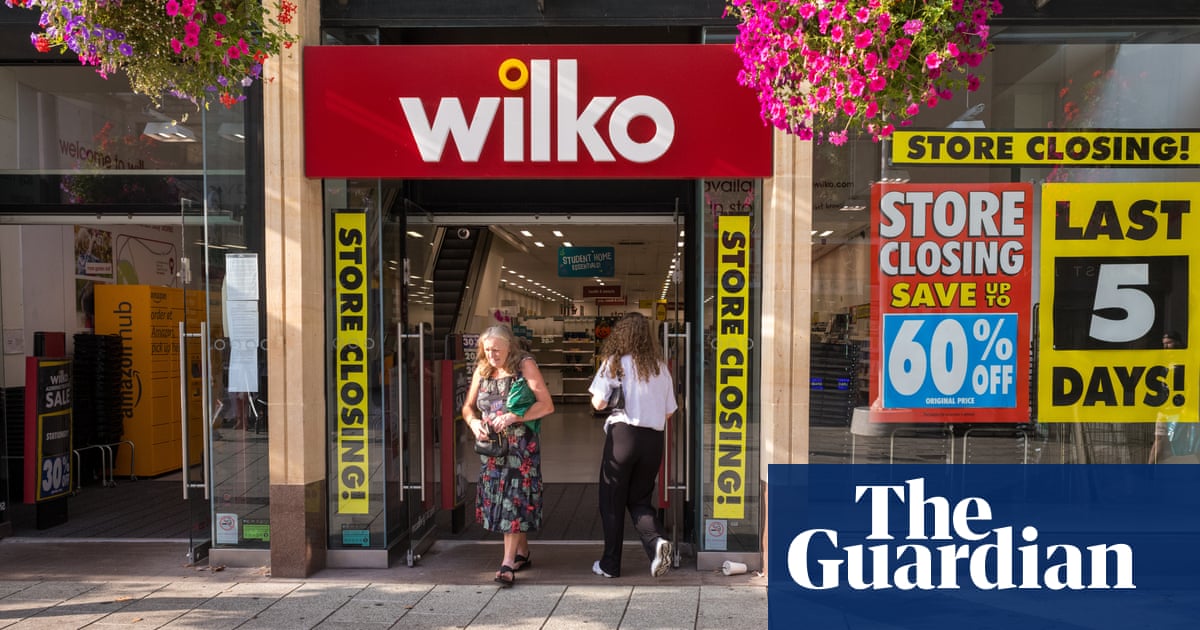
A record number of shops disappeared from high streets across the country in the first half of 2020 as the Covid-19 lockdowns hammered the retail sector.
A total of 11,120 chain store outlets closed between January and June, while 5,119 opened. The 6,001 net store closures was a record high and compared with 3,509 in the first half of last year.
Analysts predict there will be many more closures to come as the data does not include outlets that were temporarily closed under lockdown rules when analysts visited and which might end up permanently shuttered.
The figures, published by the Local Data Company and advisory firm PwC, show that on average more than 60 stores closed per day while 28 opened. The research covers high streets, shopping centres and retail parks in England, Scotland and Wales.
York was the worst affected, with 55 net shop closures in the first six months of the year, followed by Durham (43) and Corby (26).
The shop closure data reflects a crisis on the high street that has cost thousands of jobs as chains, led by already struggling fashion, mobile phone and betting shops, closed their doors.
During the period, Carphone Warehouse closed all 531 standalone branches, and fashion chains including Oasis, Warehouse, Laura Ashley and Cath Kidston all closed down. Big names including Marks & Spencer, Debenhams and House of Fraseralso closed stores.
Lucy Stainton, the head of retail and strategic partnerships at the Local Data Company, said: “The results from the first half of 2020 are a stark reminder of the challenges faced by retailers in the first six months of the year, which included a national lockdown.”
She feared this was the tip of the iceberg, with 22% of chain stores still closed temporarily “With each week that passes since retail and hospitality businesses were given the green light to reopen, the likelihood of these occupiers ever trading again in those units reduces.”
She added that local lockdowns and other restrictions such as the 10pm curfew would continue to have “a devastating impact” on the sector, with more closures likely after the key festive trading season ends.
The reports says: “Unless further government stimulus is announced, we’re guaranteed to see further closures” as a result of factors such as further movement restrictions, the unwinding of the furlough scheme this month and the end of business rates relief and VAT reductions for the hospitality sector in March.
The data does not cover independent stores, which researchers said were likely to have seen a resurgence as more people worked from home and shopped locally during the pandemic. The report found that among the chains, takeaways and coffee shops were among the fastest-growing types of high-street outlet.
In regional terms, Greater London saw the highest total number of net closures – 1,008 – followed by the south-east of England and the north-west. But Yorkshire and the Humber recorded the biggest loss of chain stores in percentage terms, with a net 3.4% of outlets disappearing, compared with 2.2% in the east of England, which was the best performing region.
Shopping centres were the worst-affected location.
Lisa Hooker, a consumer markets leader at PwC, said the pandemic had accelerated existing changes in shopping behaviour as it had “forced experimentation” during the lockdown.
“We all knew that consumers were shifting to shopping online or changing their priorities in terms of the things they buy, but what Covid-19 has done is create a step-change in these underlying trends to where they have now become the new normal,” she said. “We all still want and need to physically visit shops and leisure operators, it’s likely then that whatever happens retail will come out of this smaller but stronger.”











